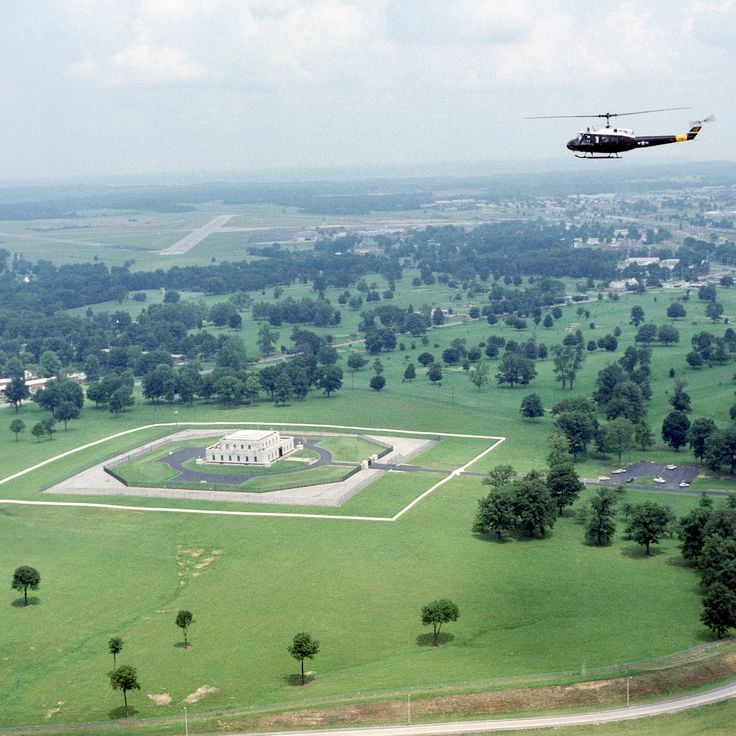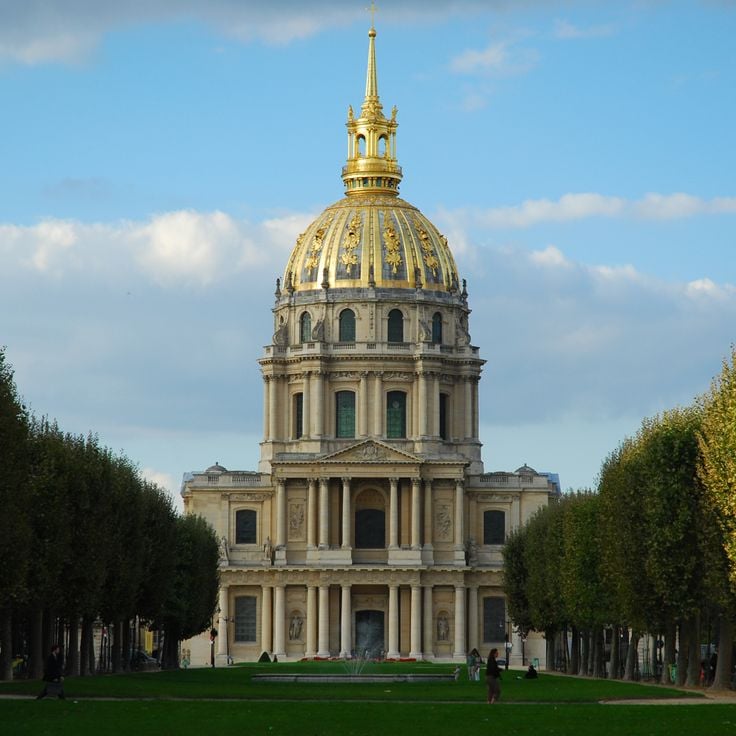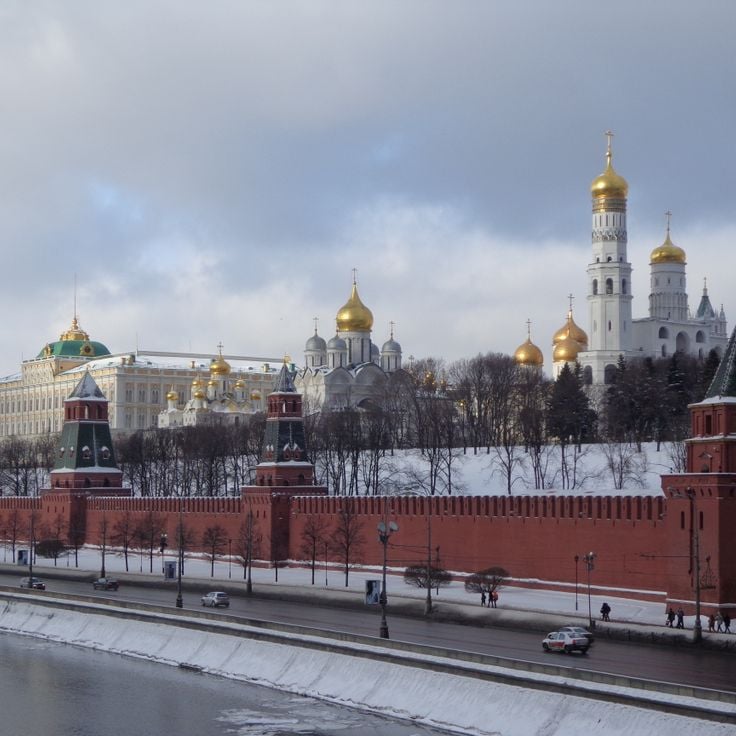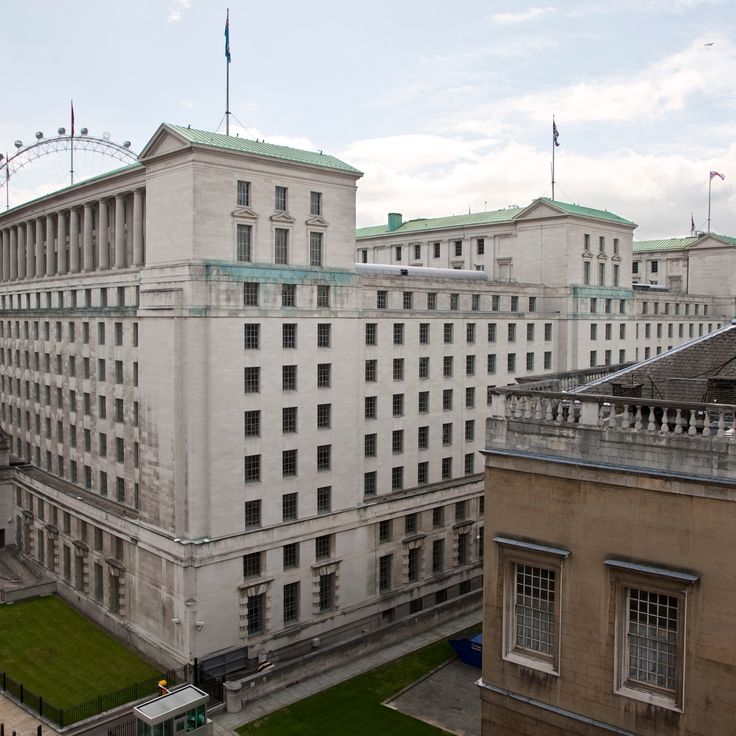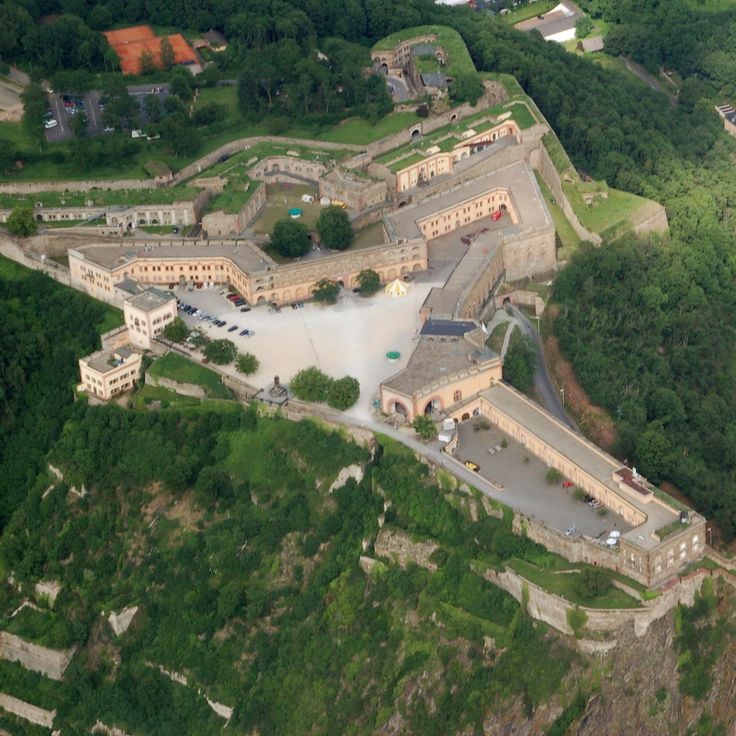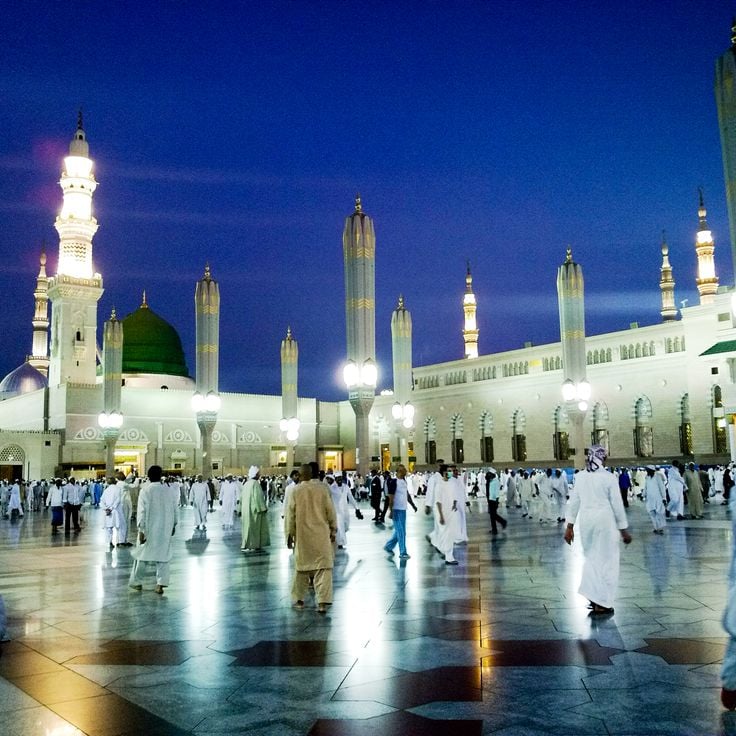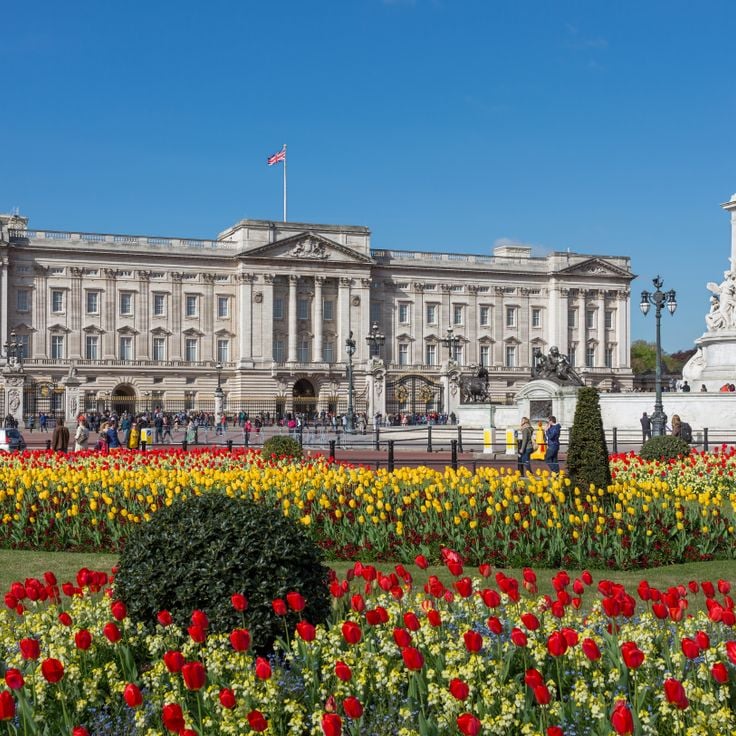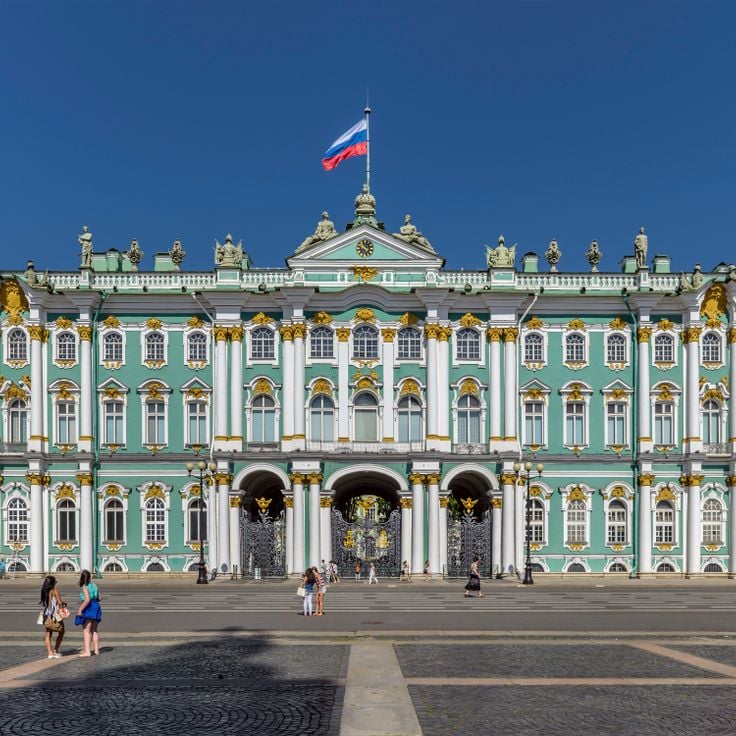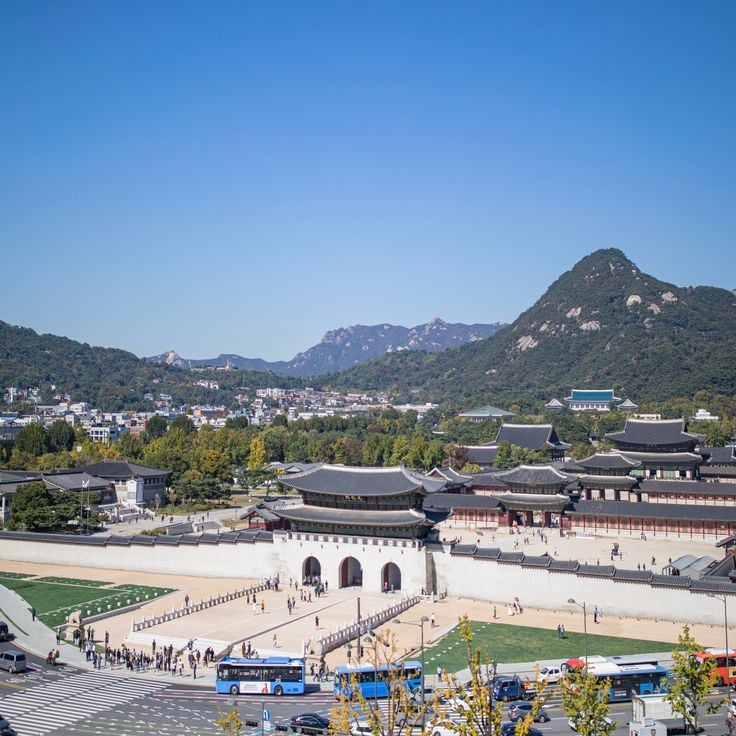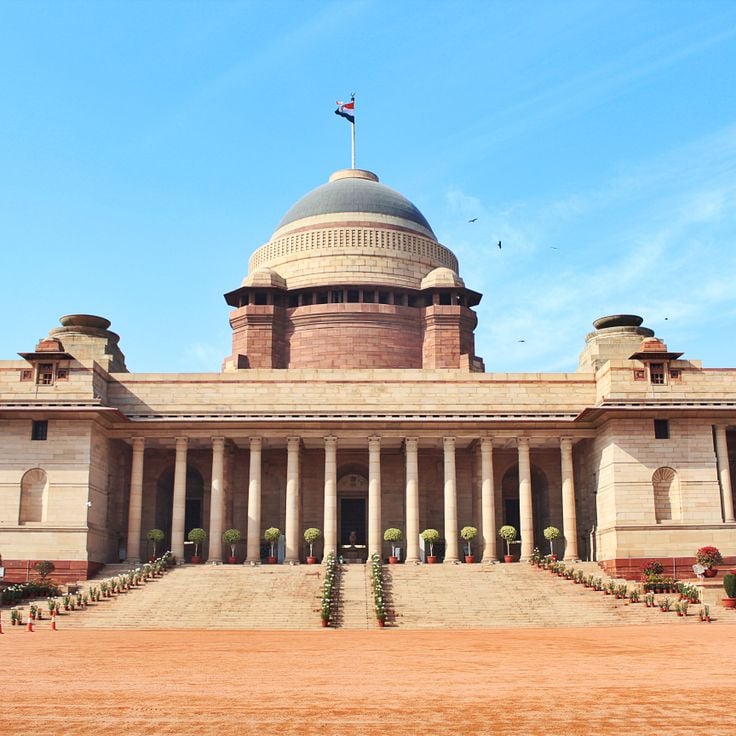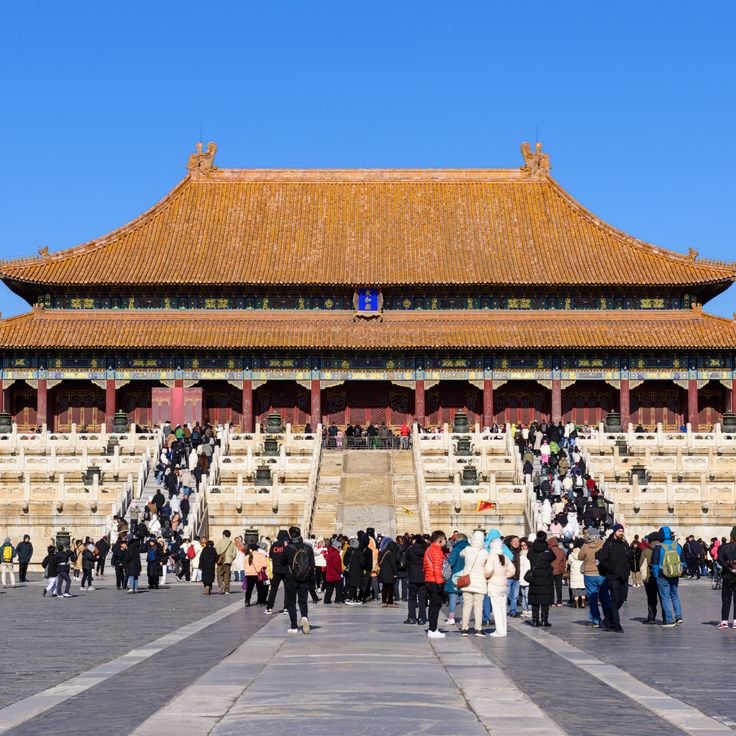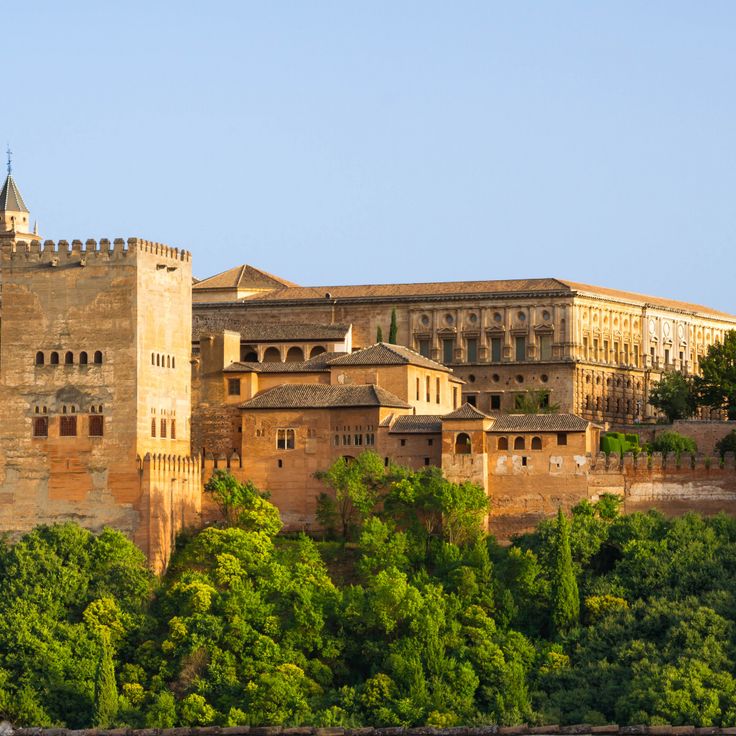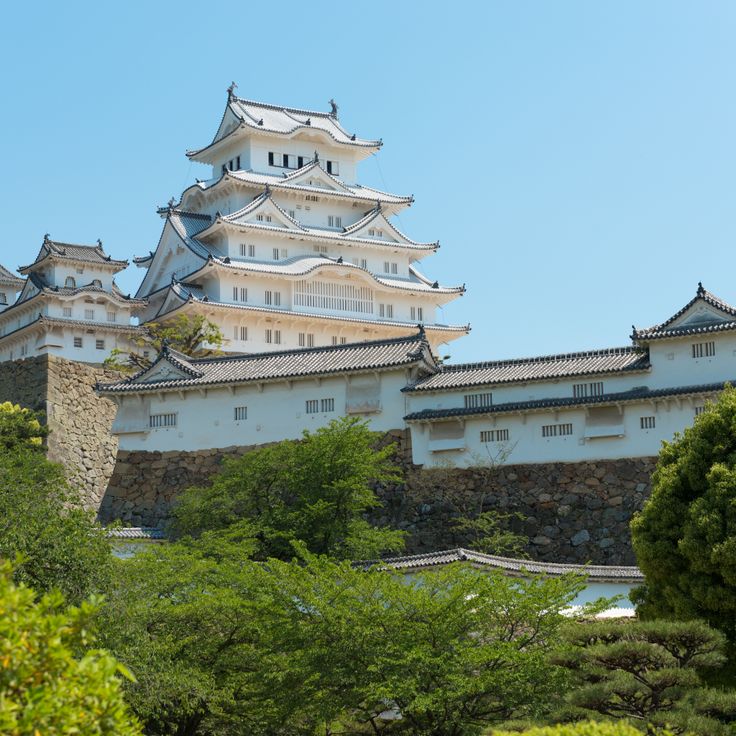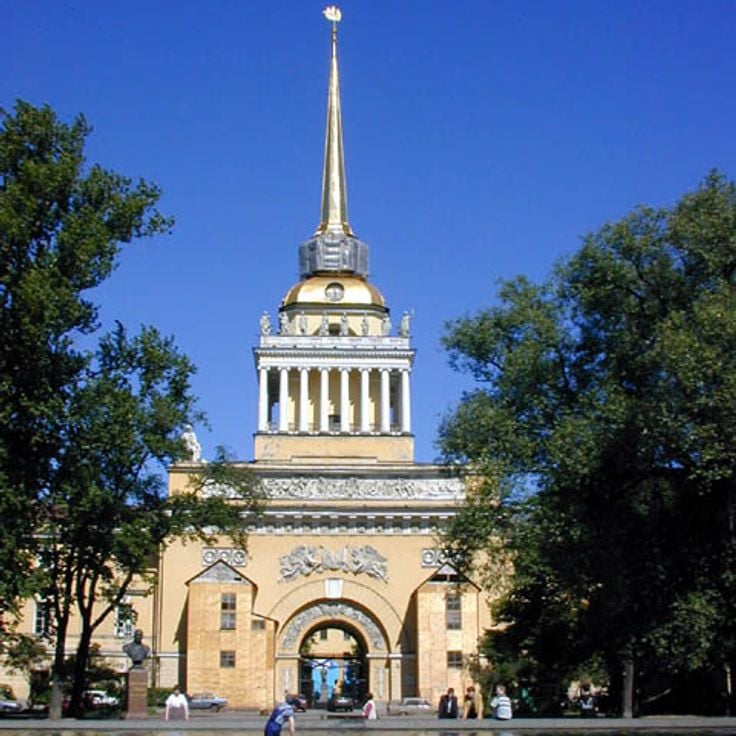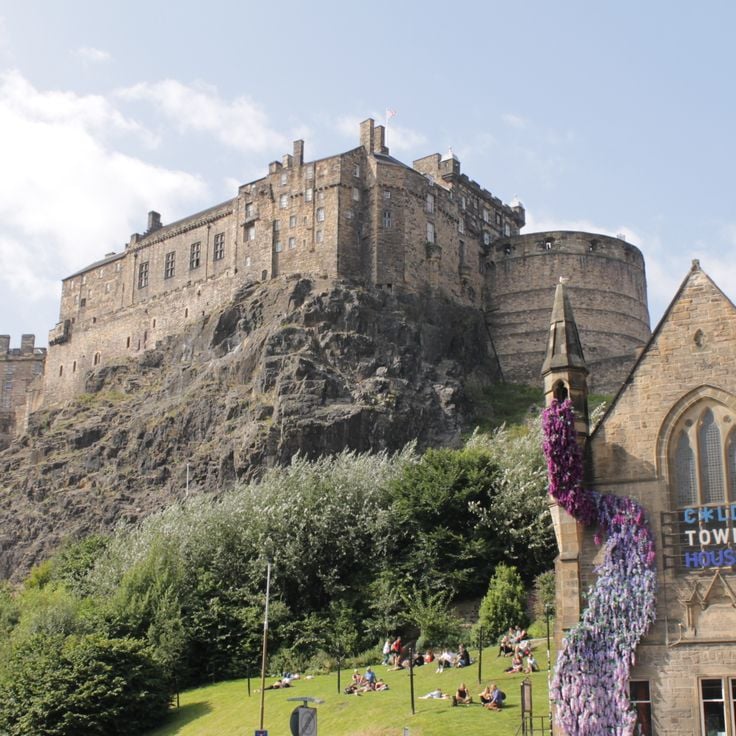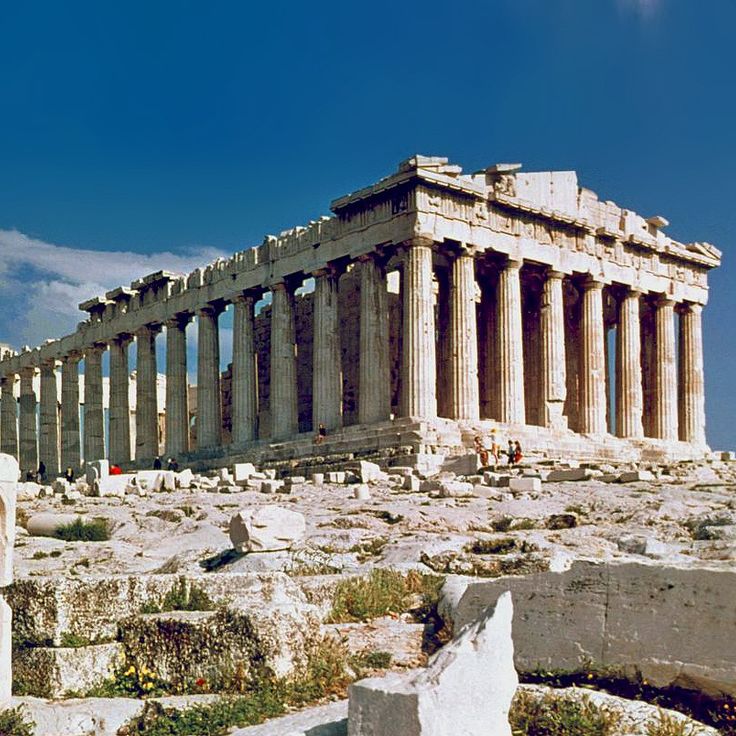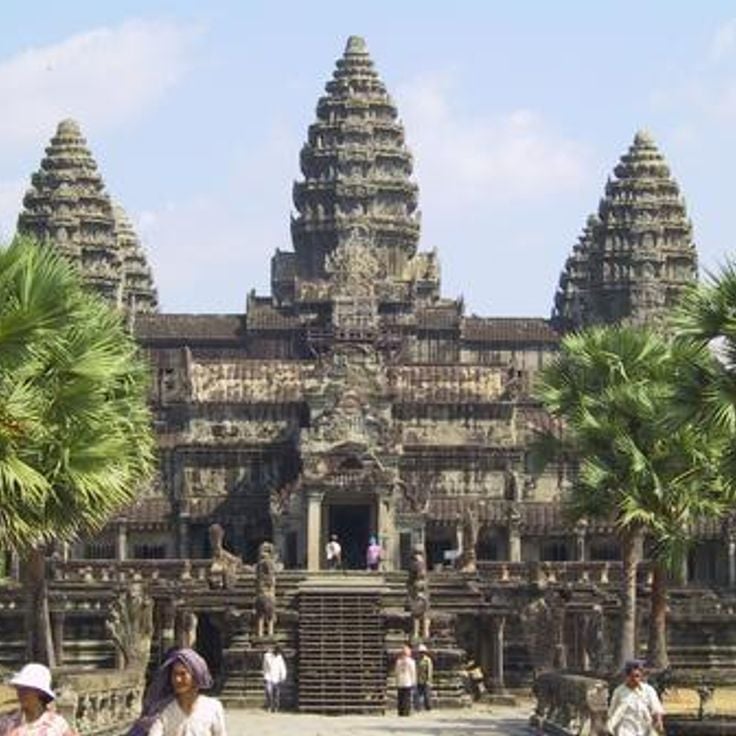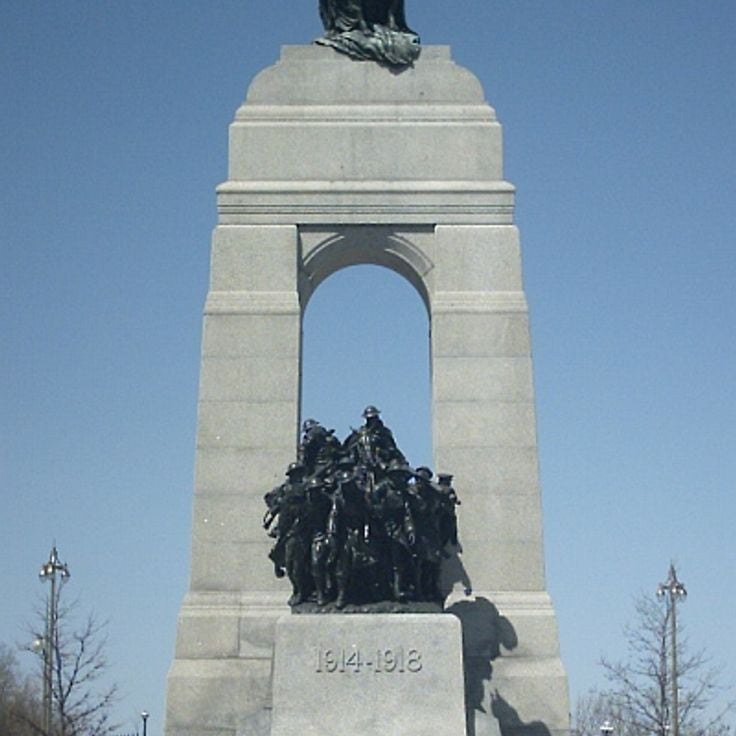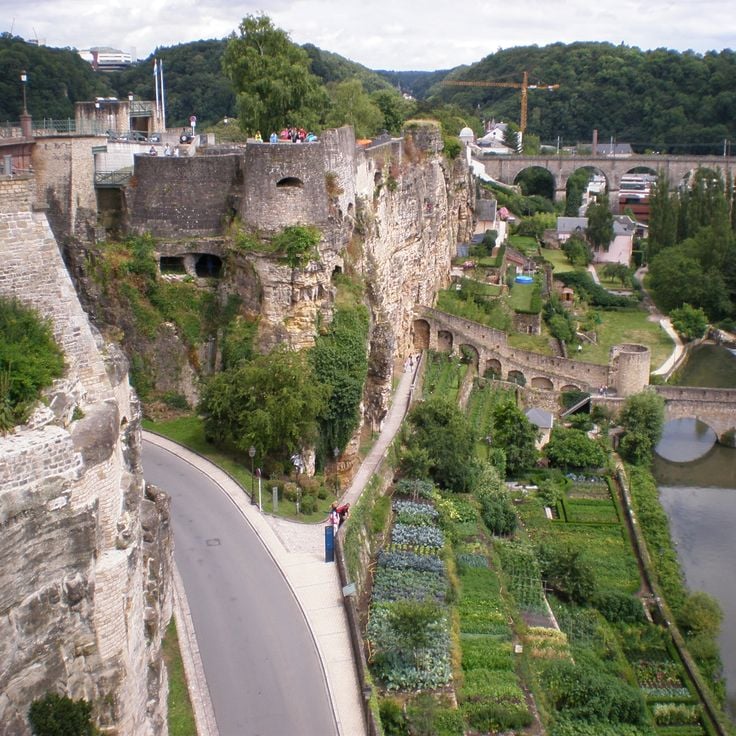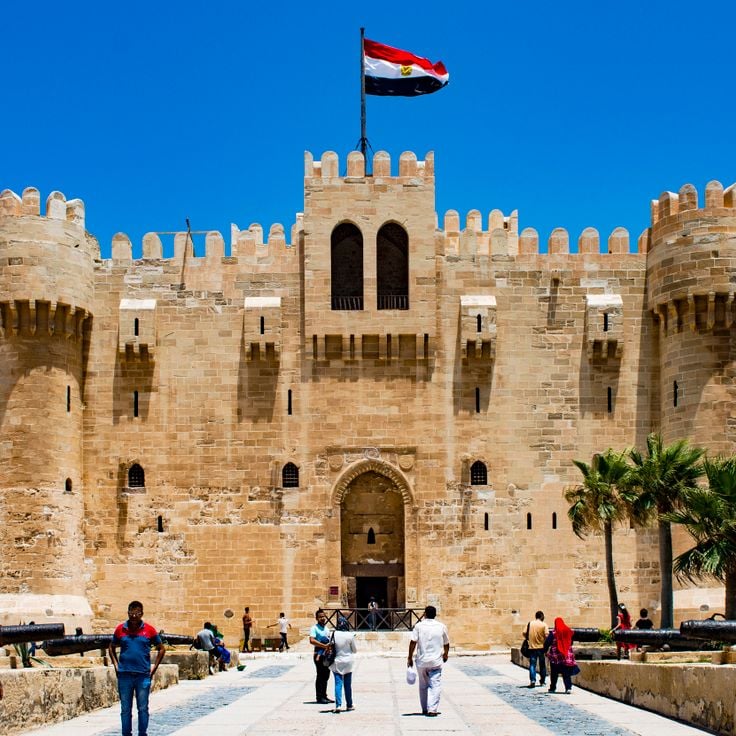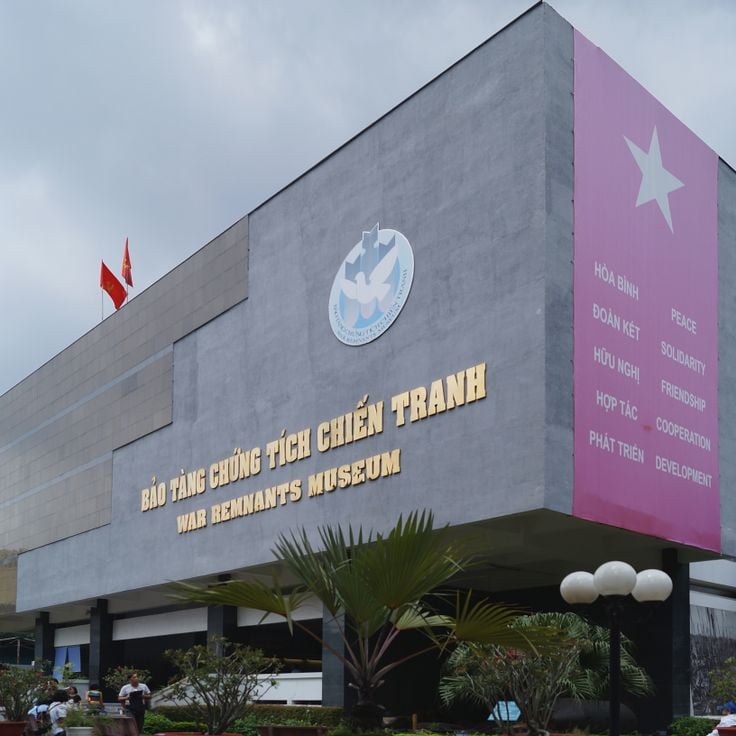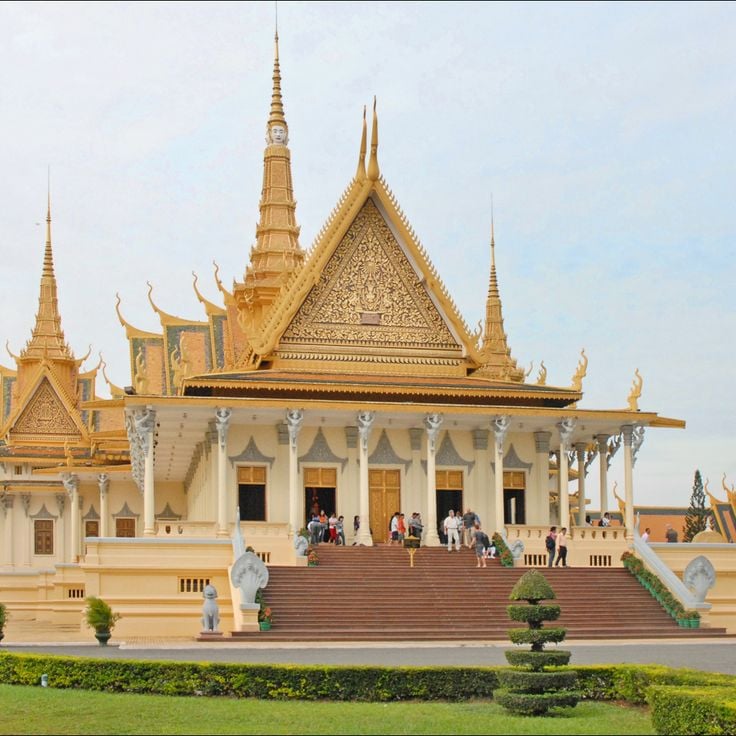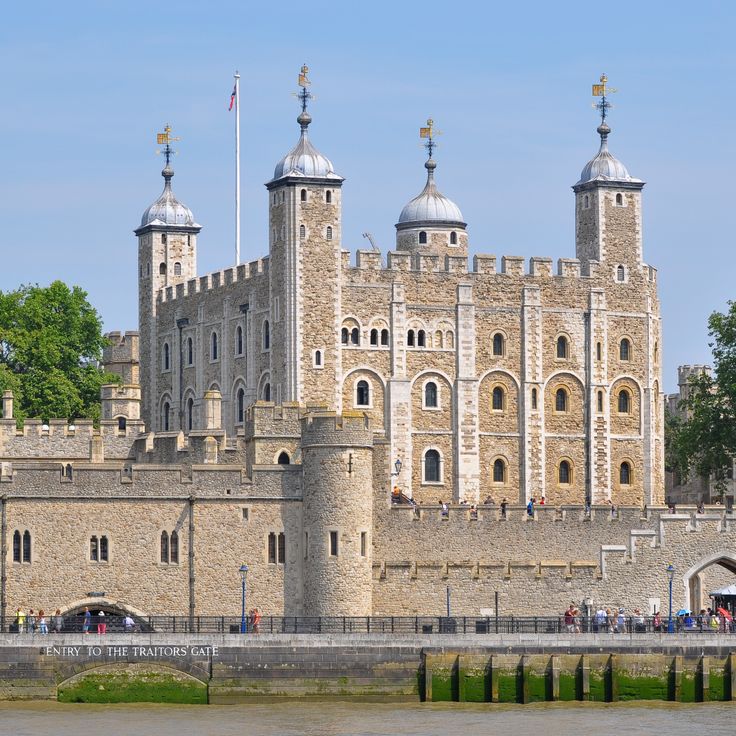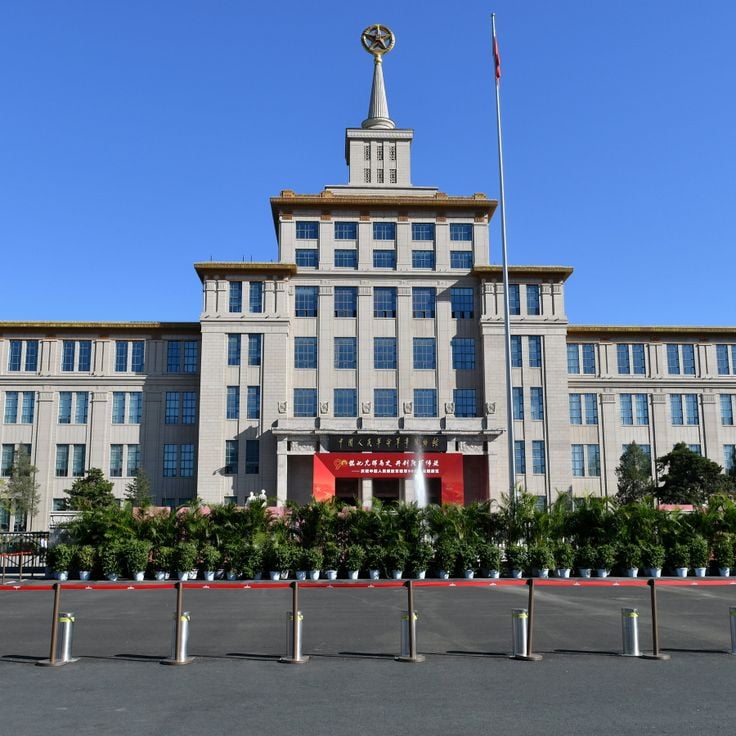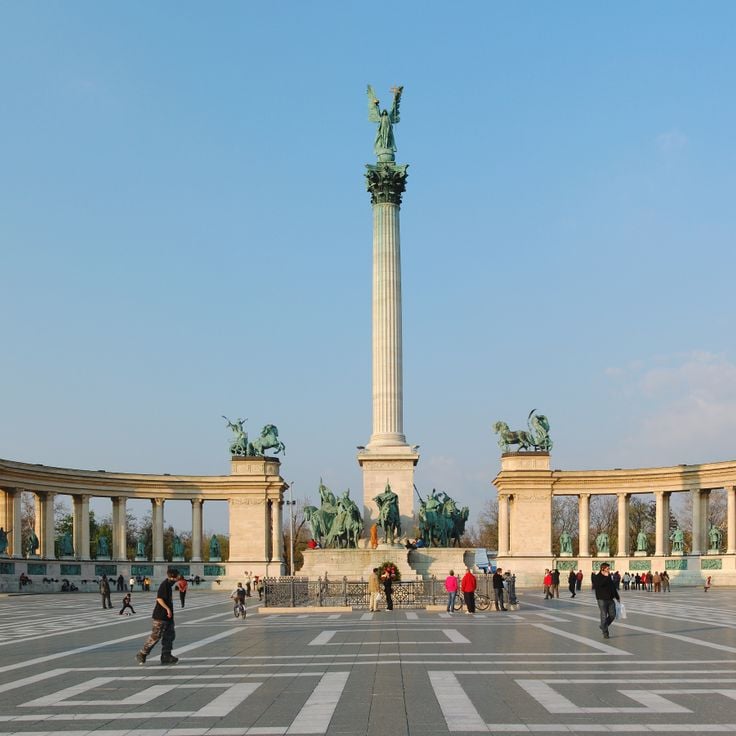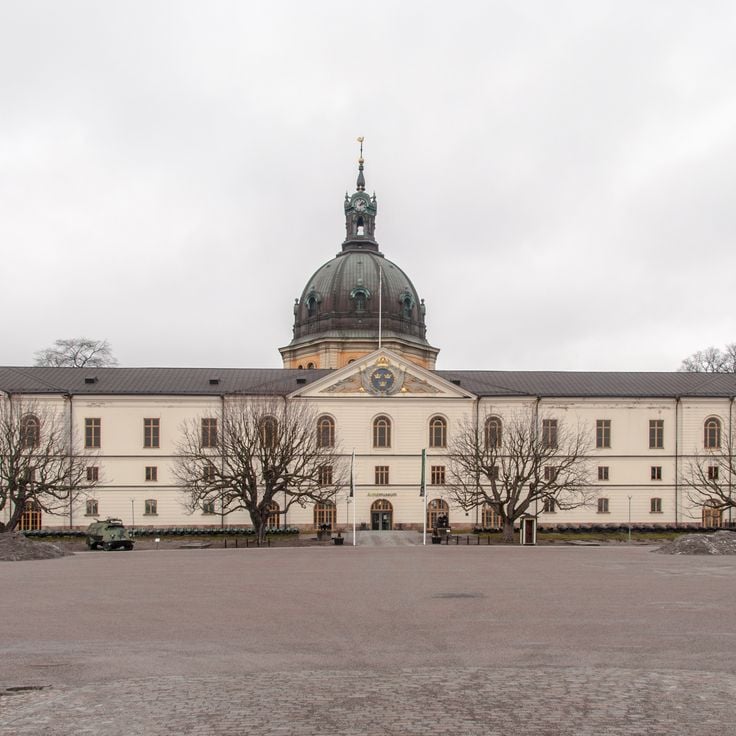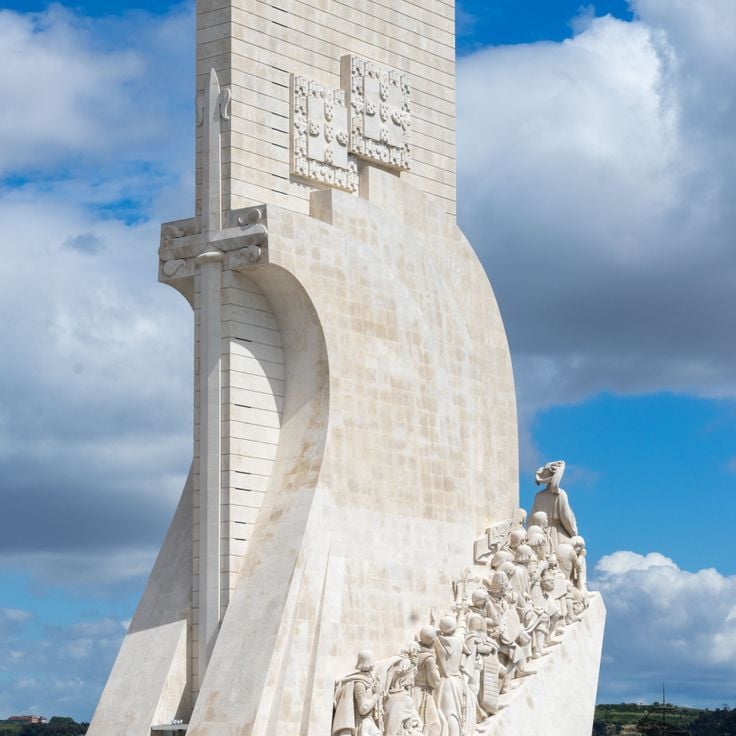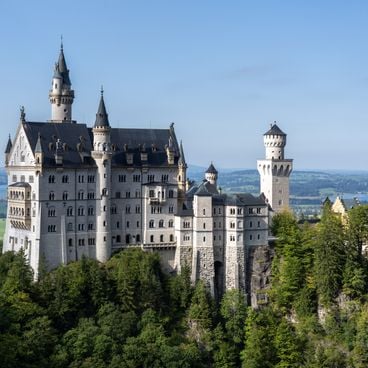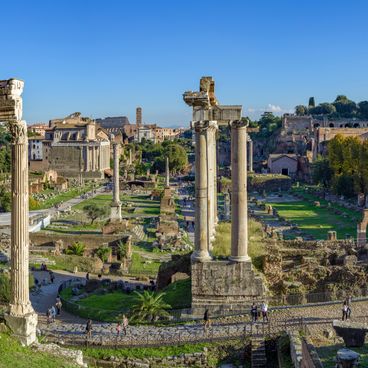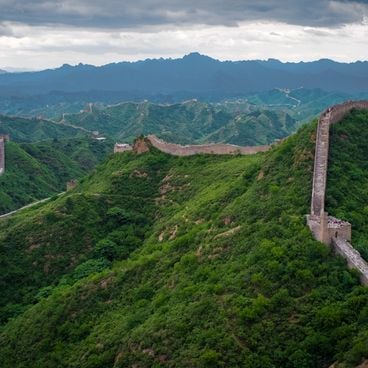Military buildings from different countries demonstrate the evolution of defense structures and command centers across centuries. This collection includes medieval castles, early modern fortifications, barracks, command posts, and contemporary military installations. Each structure documents the military strategies, technological advances, and historical events of its era. The sites range from European fortress systems such as Vauban fortifications in France to Asian defensive walls and American military bases from various periods. Many of these structures played critical roles in wars and conflicts and are now accessible as monuments or museums. They provide insights into military architecture, engineering practices, and the strategic importance of their locations.
Fort Knox is a military installation in Kentucky that serves two primary functions for the United States. The facility houses the US Treasury gold depository, which stores a substantial portion of the nation's gold reserves in a heavily secured vault. Additionally, Fort Knox operates as the headquarters of the US Army Armor School, where soldiers receive training in tank operations and armored vehicle tactics. The installation combines financial security with military education on an extensive compound.
Les Invalides was built in the 17th century as a complex for war veterans and now houses the Army Museum, the Dôme des Invalides church and Napoleon's burial site. The collections present weapons, uniforms and military equipment from different periods of French military history. The gilded dome rises above the monumental courtyard and serves as a landmark in the seventh arrondissement.
The Kremlin in Moscow is a medieval fortified complex located in the heart of the Russian capital. The distinctive red brick walls stretch for 2.25 kilometers and enclose an area containing government buildings, historic palaces, Orthodox cathedrals and the arsenal. The complex has served as the seat of political power in Russia for centuries.
The Ministry of Defence in Westminster serves as the headquarters for the British armed forces. The complex was constructed in the 1950s and currently accommodates approximately 2,800 military and civilian defense personnel. The building coordinates operations for the Royal Navy, British Army, and Royal Air Force.
Ehrenbreitstein Fortress rises on a 118-meter high rock formation above the Rhine River. The Prussian military administration constructed this fortification between 1817 and 1828. This structure ranks among the largest preserved fortresses in Europe and served as a strategic defensive position at the confluence of the Rhine and Moselle rivers.
The Prophet's Mosque is a 7th-century religious site in Medina that accommodates up to one million worshippers. The building houses the tomb of Prophet Muhammad and serves as the second holiest site in Islam. The mosque has undergone multiple expansions and modernizations, with its architectural development reflecting different historical periods.
Buckingham Palace was built in 1703 and has served as the official residence of the British monarchy since 1837. The building contains 775 rooms, including 52 bedrooms for the royal family and guests, 188 staff rooms, 92 offices, and 78 bathrooms. The palace functions as an administrative headquarters and venue for state receptions and official ceremonies. The State Rooms open to visitors during summer months and display artworks from the Royal Collection.
The Winter Palace was constructed between 1754 and 1762 following designs by Italian architect Bartolomeo Rastrelli. The building spans 60,000 square meters and now houses the Hermitage Museum with over three million artworks. The green and white facade displays characteristic features of Russian Baroque with gilded ornaments and two hundred seventy-eight columns. The palace contains one thousand five hundred rooms that document the history of the Russian monarchy.
Gyeongbokgung Palace was completed in 1395 as the main royal residence of the Joseon dynasty and served as the political and ceremonial center of the Korean kingdom for nearly five centuries. The extensive compound covers more than 40 hectares and includes over 300 buildings with 5600 rooms, encompassing throne halls, administrative buildings, royal living quarters, and pavilions. The palace was destroyed during the Japanese invasions of the late 16th century and remained in ruins for over two centuries before being reconstructed in the 19th century. Today, visitors can explore the restored main halls, royal residential areas, and garden spaces that reflect the architectural principles and courtly culture of the Joseon period.
Rashtrapati Bhavan serves as the official residence of the President of India. The palace was completed in 1929 following designs by British architect Edwin Lutyens and contains 340 rooms across four floors. The architecture combines classical European style elements with traditional Indian motifs, including domes, columns, and decorative stonework. The building stands on Raisina Hill and forms the centerpiece of New Delhi's administrative district.
The Forbidden City was constructed between 1406 and 1420 and served as the residence for 24 emperors of the Ming and Qing dynasties. The palace complex spans 72 hectares and contains 980 buildings featuring traditional Chinese architecture. The compound is surrounded by a 7.9-meter-high wall and a 52-meter-wide moat. Today, the Forbidden City houses the Palace Museum, which displays collections of imperial artworks and artifacts.
The Alhambra is a medieval Moorish fortress complex on Sabikah Hill, constructed between the 13th and 14th centuries. The compound features red stone buildings that include palaces, watchtowers, and defensive walls. The site served as both a residence for Nasrid rulers and a military stronghold, combining Islamic architecture with fortification structures.
Himeji Castle rises as a white fortified complex from the 14th century above the city of the same name. The ensemble comprises 83 wooden buildings connected through an elaborate system of defensive walls, gates, and pathways. The six-story main keep dominates the compound and served as the final refuge during enemy attacks. The architecture combines military functionality with traditional Japanese wooden construction techniques from the feudal period.
The Admiralty Building served as the headquarters of the Admiralty Board and the Imperial Russian Navy. This complex was constructed in the early 18th century under Peter the Great and housed the central administration of the Russian naval forces. The distinctive gilded spire featuring a ship symbol rises over 70 meters high and defines the skyline of Saint Petersburg. Today the historic building contains a naval college and military facilities.
Edinburgh Castle rises from an extinct volcanic rock in the center of Scotland's capital. The fortress served for centuries as a royal residence and military stronghold. Within its walls are housed the Scottish Crown Jewels and the Stone of Scone, a historic coronation stone from the 12th century. The site documents Scottish history from the Iron Age to the present day.
Malbork Castle was built in the 13th century by the Teutonic Order as a fortified monastery and later became the seat of the Grand Master. The complex consists of three separate castles with inner courtyards, protected by defensive walls, water-filled moats and multiple towers. The brick architecture displays Gothic construction techniques with ribbed vaults, chapels and residential quarters. The castle sustained damage during World War II and was subsequently reconstructed.
The Parthenon was built between 447 and 432 BCE on the Athenian Acropolis. This Doric temple was dedicated to the goddess Athena Parthenos. The structure housed a monumental statue of the goddess made of gold and ivory, created by sculptor Phidias. Architects Ictinus and Callicrates designed the temple with eight columns on the fronts and seventeen along the sides. The friezes and metopes display scenes from Greek mythology.
Angkor Wat is a monumental temple complex from the 12th century, originally dedicated to the Hindu god Vishnu and later transformed into a Buddhist site. The structure covers approximately 162 hectares and features a central tower surrounded by four smaller towers. The complex displays detailed bas-reliefs depicting scenes from Hindu mythology and historical events of the Khmer Empire. The temple served as a religious and political center under King Suryavarman II.
The Pentagon serves as the headquarters of the United States Department of Defense and is located in Arlington County, Virginia. Completed in 1943, this building complex takes its name from its geometric shape with five sides. The Pentagon houses the military leadership of the United States and coordinates operations across all armed forces branches. With a floor area of approximately 28 hectares, it ranks among the largest office buildings in the world and employs tens of thousands of military and civilian personnel.
The National War Memorial stands on Confederation Square in the heart of Canada's capital. The monument was unveiled in 1939 and honours soldiers who served in the First World War. After 1982, it was rededicated to commemorate all Canadians who have died or served in military conflicts. The central sculpture features 22 bronze figures passing through a triumphal arch, with two allegorical figures at the top. The memorial serves as the site for national ceremonies of remembrance, particularly on Remembrance Day.
The Fortress of Luxembourg was constructed over several centuries between the 16th and 19th centuries and served as one of Europe's most important defensive installations. The complex included bastions, underground casemates, and defensive walls that extended across the city's hills. Following its demilitarization in 1867, large sections were demolished, while significant portions of the casemates and fortification remains are now protected as a World Heritage Site.
The Citadel of Qaitbay was constructed in 1477 by Sultan Al-Ashraf Qaitbay on the exact location where the famous Lighthouse of Alexandria once stood, one of the Seven Wonders of the Ancient World. The fortress was built to protect against Ottoman attacks and incorporated stones from the collapsed lighthouse into its construction. This structure combines military architecture with a strategic position on the Mediterranean coast and served for centuries to defend the harbor of Alexandria.
The Hanoi Citadel served as the military and political center of Vietnam for over twelve centuries. The fortified complex was constructed during the Ly Dynasty in the 11th century and expanded by successive ruling dynasties. Archaeological excavations have uncovered foundations, gates, pavilions and underground passages that document different construction periods. The site includes the flag tower, imperial palaces and administrative buildings that reflect the military strategy and administrative organization of different eras.
The War Remnants Museum in Ho Chi Minh City documents the Vietnam War through an extensive collection of military equipment, photographs and historical documents. The exhibition includes tanks, fighter aircraft, helicopters and artillery pieces displayed in outdoor areas. Inside, several galleries present photographs, personal items belonging to soldiers, and documents that examine different aspects of the war.
The Royal Palace in Phnom Penh was constructed in 1866 under King Norodom and continues to serve as the official residence of the Cambodian monarchy. The complex comprises several buildings, including the Throne Hall and the Silver Pagoda. Guard towers and defensive walls demonstrate the military function of the compound, which was originally designed to protect the royal family.
The Tower of London is a historic fortress located on the north bank of the River Thames. William the Conqueror commissioned the White Tower in 1078 to demonstrate his power over London. Throughout the centuries, the complex served as a royal residence, armory, treasury, royal menagerie, and prison for high-ranking traitors. Today, the fortress houses the Crown Jewels of England and is guarded by the Yeoman Warders.
The Fortress of Suomenlinna was built in 1748 across six islands off Helsinki to defend against Russian expansion. The complex includes artillery positions, underground bunkers, defensive tunnels and a former naval dockyard. Bastions and walls connect the islands together. Suomenlinna is a UNESCO World Heritage Site and represents 18th-century European military architecture.
The Castillo de San Pedro de la Roca was constructed in 1638 to defend the harbor entrance of Santiago de Cuba against pirate attacks. This fortress comprises multiple levels of gun platforms, barracks, and watchtowers built into the natural coastal rock formations. The structure follows Italian and Spanish fortification traditions of the 17th century.
Fortaleza do Monte was built between 1617 and 1626 as a military defense installation. This fortress features massive stone walls and was equipped with cannons that served to protect the Portuguese colony. Within the complex were barracks for soldiers as well as storage rooms for ammunition and military equipment. The strategic position on a hill allowed surveillance of the harbor and surrounding areas.
The Beijing Military Museum opened in 1960 and presents China's military history through an extensive collection of weapons, uniforms, and military equipment. The exhibition spans from ancient times to the present day and includes over 300,000 objects, among them swords, armor, artillery pieces, tanks, and aircraft from different periods of Chinese history.
Heroes' Square was built in 1896 to commemorate the thousandth anniversary of Hungary. The square displays statues of important Hungarian rulers and military commanders from different periods in the country's history. At the center stands a 36-meter-tall column topped with a statue of Archangel Gabriel. Two semicircular colonnades flank the square and feature additional sculptures of historical figures.
The Army Museum presents the history of the Swedish armed forces through an extensive collection of weapons, uniforms, medals, and military vehicles. The exhibition documents Sweden's military development from the 16th century to the present day, showcasing both the technical aspects of warfare and the impact of armed conflicts on soldiers and civilians.
The Merchant Marine Monument was erected in 1994 as a stone memorial bearing the carved names of 86 Portuguese merchant ships and 152 sailors who perished during World War II. This commemorative structure stands in Lisbon as a tribute to the Portuguese mariners who lost their lives in service. The names of the vessels and crew members are engraved in the stone, providing a historical record of Portugal's maritime losses during the war.
